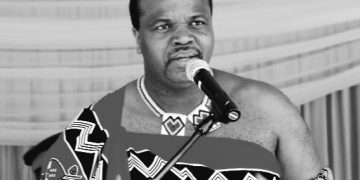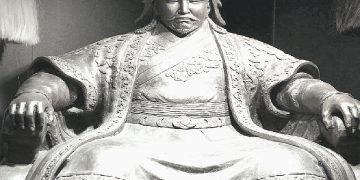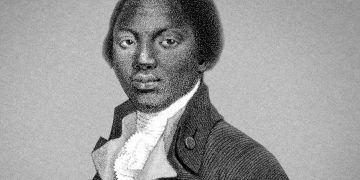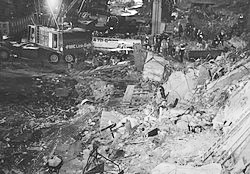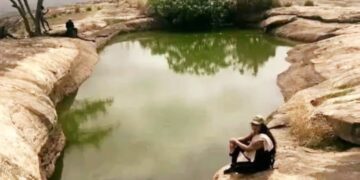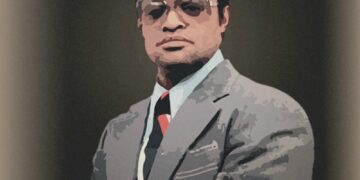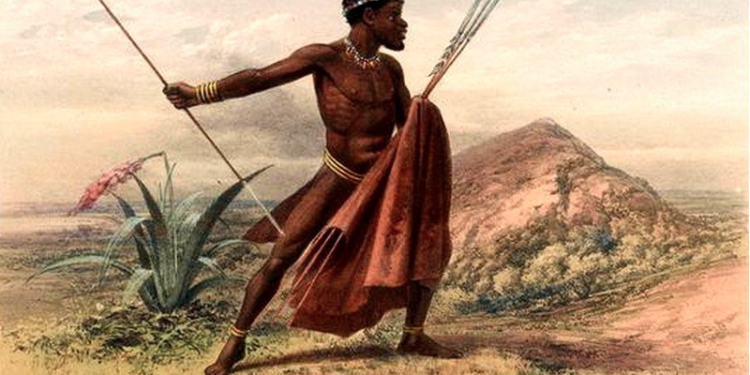Of all the indigenous peoples of South Africa, the representatives of the braid people who were usually called kaffirs, who lived north-east of the Cape Colony, were the longest opposing European colonialists. The Dutch, and then the British, had to wage a series of wars against them – they used to be called the Kafra, and now they are usually called the Border. The conquest of the spit stretched for almost a century. The beginning of a long conflict was laid in 1780, when the veldkorn van Jaarsveld demanded that the scythe collect his belongings and get out of the River Fishiver.
First contacts
The first inhabitants of the south of the African continent were the people of the San – nomadic hunters and gatherers, whom the whites called the Bushmen. Later from the north with their herds came Koikoin nomads, better known as the Hottentots. At the beginning of the II millennium A.D. new migrants arrived in South Africa – cattle breeders and Bantu farmers, divided into three large language groups: Soto, Tsonga and Nguni, consisting of hundreds of small clans, which gradually merged into large chiefdoms.

The largest chiefdom of the southern Ngunis was the scythe, which appeared to be at the “tip” of the Bantu migration. Moving southwest along the coast of the Indian Ocean, they reached the Big Cay River around 1670.
In 1652, the Dutch East India Company established a colony on the Table Bay on the Cape Peninsula – an intermediate stop for its ships en route to the Dutch East Indies (present-day Indonesia). To supply seafarers with food, the company settled Dutch and German peasants on the Cape. Also came here 156 French Huguenots who fled from France after the abolition of the Nantes Edict. Officially, these farmers were called “free burghers”, but officials of the East India Campaign scornfully called them the “Hillbilly” – the Boers.
The colony gradually grew, subjugating and driving out neighboring Hottentot clans. The Mediterranean climate favored the development of agriculture, winemaking and animal husbandry.
In 1702, one of the expeditions sent to the northeast collided at Algoa Bay, 770 km from Kapstadt (present-day Cape Town ), with new natives, not at all like low-growing Bushmen and Hottentots. The mighty black warriors attacked the settlers, but the white manages the attackers with rifle fire. From koykoin they learned the name of these people – a scythe. According to one version, this is the name of the mythical ancestor of the people. According to another, the Hottentots called them “destructive”.
After the first collision, more than half a century has passed. Around 1770, on the banks of Fishrever (Afrikaans, this river is called Khrut-Fis), two streams of migrants met moving with their herds towards each other – a spit from the north-east and a borax from the south-west. They immediately began to compete for pasture and watering. Like for other Bantu, cattle for a scythe were a measure of wealth, and the concept of private ownership of land was unknown to them. The Africans began to steal cattle, and the Boers decided to punish them.
Boer Wars
By that time, the spit was a loose conglomerate of half a dozen chiefdoms and dozens of clans formally divided by the Bolshoi Kay River into two groups: Gkalek lived east of the river, and rararbe lived west. The power of their supreme leaders was largely formal. This was not understood by the Cape Governor Baron van Plettenberg, who in 1778 arrived on the eastern border of the Cape Colony. He agreed with several braid leaders that they would leave for Fishriver and that the river would become the boundary between whites and Africans. However, these agreements meant absolutely nothing for dozens of other leaders.
The first war ended with the expulsion of Africans for Fishriver. Only a few years passed, and the spit again began to cross the river and populate the lands that the Boers already considered their own.
In May 1793, a conflict between two spit clans and farmers led to a series of attacks on Boer settlements. Several farms burned down. The Scythe drove the cattle of the Boers and killed their Hottentots. Thus began the Second Frontier War. Landdrost (district chief) of the border district of Graff-Reinet Minir assembled a commando. For several months, the detachment was engaged in “stripping”, capturing 8,000 cattle and destroying an unknown number of Africans. By November, the scythe was again banished for Fishriver, and the Second War ended.
The very next year, the scythe clans began to return to the lands west of Fishrever again – the agrarian overpopulation in the territories east of the river was too large and the local pastures were too important for grazing. Constant land conflicts and recriminations of cattle theft have turned the eastern border of the Cape Colony into a restless frontier.
The arrival of the British
In 1795, the British captured the Cape Colony and, like the Dutch, first tried peacefully to solve the Cape Frontier problem. Administrator John Barrow, sent by the governor of the colony, negotiated with the supreme leaders of the scythe in 1797. Those agreed that Fishriver would become the border of two worlds, but again were not able to fulfill this requirement, and all new scythe clans moved to lands west of the river.
In April 1799, the Cape Governor sent Brigadier General Thomas Vandeleur to order the establishment of a border along Fishriver. Vandeler landed in Algoa Bay and built a fort, from which the history of one of the largest cities in modern South Africa – Port Elizabeth began. Combining with the local Boer commando and the Hottentots, General Wandeller marched north, starting the Third Border War. In several battles, he broke a braid, although they demonstrated that they can learn: British soldiers recalled that the braid had fallen sharply on the ground and that bullets often did not penetrate the thick skins that the Africans threw upon themselves. Spit increasingly evaded open combat and tried to ambush in a dense bush. On May 5, 1799, in such an ambush, they destroyed 16 soldiers led by Lieutenant John Chemni,
After several months of such a war, General Vandeler retreated to Algoa Bay, concluding that “it would be foolish to have an unequal battle with savages among impenetrable thickets that would not add glory to British weapons . ” Soon, British soldiers left the region, and the local Boers continued the war with the scythe. Commander Tiaart van der Walt assembled a detachment several times and campaigned on the Africans until he died in battle in August 1802.
Formally, the Third Border War ended in 1803 when the British transferred the Cape Colony to the Batavian Republic. The new Dutch governor Janssens achieved peace by abandoning the border on Fishiver, which did not add Boer love to the Batavian authorities.
Governor Janssens meets with the leaders of the scythe, 1803. Source: Willem Steenkamp. Assegais, Drums & Dragoons: A Military And Social History Of The Cape. – Jonathan Ball Publishers Sa, 2012 – Troubled Frontier by Fishriver | Warspot.ru
Governor Janssens meets with the leaders of the scythe, 1803. Source: Willem Steenkamp. Assegais, Drums & Dragoons: A Military And Social History Of The Cape. – Jonathan Ball Publishers Sa, 2012
War of 1812
By 1806, when the British finally established power over the Cape Colony, Fishriver was no longer a border. Under pressure from the scythe, Boer farmers retreated a hundred kilometers west to the Sandays River. Having carefully studied the situation, Cape Governor John Cradock decided to clear the lands west of Fishriver for settlers from the British Isles, who would become the mainstay of the British authorities in the Cape Colony.
On September 30, 1811, the governor appointed Lieutenant Colonel John Graham, commander of the Cap conquest in 1806, who later formed and led the Cape regiment, which was staffed by the Hottentots, as commissar for military and civil affairs on the eastern frontier. The appointment was accompanied by a brief order: “Take the most effective measures to clean the possessions of Her Majesty from the people of kafra . ” A week later, Lieutenant Colonel Graham sailed to Algoa Bay with 200 British soldiers, 250 Coyco koykoin regiment and several guns. On the spot, he called a large commando from the local Boers and their Hottentot servants, bringing his army to 2,000.
From a position of strength, Lt. Col. Graham tried to dictate his terms to the braid. On December 27, at a meeting with Captain Jacob Kyler, the chief leader of the West of Fishreer Spit Ndlambe sharply answered the demand to leave: “This land is mine. I conquered it and I will fight for it . ” The next day, in an ambush, the Landrost of Hraaf-Reynet Andres Stockenström died. The Fourth Border War began.
On January 1, 1812, Lt. Col. Graham launched a sweeping operation. The British and the Boers in three columns moved from Sandys to Fishriver, on the way mercilessly burning houses, destroying crops and stealing cattle. Most of all, the braid was shocked by the fact that whites and their allies killed women and children – this was not the case in the wars of African savages. British officers made excuses that in the bush it was difficult to distinguish between native men and women. In one of the battles, the most warlike of the braid leaders by the name of Chungwa died. Ndlambe fled after Fishriver, and other braids began to leave behind in large numbers.
By early March, stripping was completed. Up to 20,000 braids fled. Lt. Col. Graham said that any scythe found on the west coast of Fishrever would be killed on the spot. Along the river, 20 forts were established, equipped with Hottentot soldiers of the Cape Regiment, and Grahamstown, named after the lieutenant colonel, was founded 30 km from Fishriver.
In 1814, the eastern frontier was proclaimed a separate administrative unit of the Cape Colony. In honor of Captain Kyler’s North American homeland, she received the name Albany, and Grahamstown became the center of the new district.
The border goes east
A feature of the history of the scythe is the unexpected appearance in their midst of prophets who most dramatically affected the fate of the whole people. Such a prophet appeared after the defeat of 1812, exacerbated by several years of drought. Makana, nicknamed Nhele, which means “left-handed”, spent several years in a Christian mission. He began to preach a new faith among the scythe, according to which the original sin lay on white people, and the scythe was chosen by a kind of Great Spirit in order to throw sinners into the sea and cleanse the earth from filth. Shotguns will not help the British, for by divine power their bullets will turn into water.
By the end of January, the land between Fishreaver and Sandyce had almost completely returned to the scythe. The British held only Grahamstown and a dozen forts. Reinforcements, led by Lt. Col. Thomas Wilshere, were thrown across the Algoa Bay by sea. Arriving at Grahamstown, he began to collect commando.
On the morning of April 24, 1819, the lieutenant colonel received the news that the braid warriors were driving herds of cattle away from Grahamstown. Together with the Hottentot horsemen, he rode out into the field, ambushed the scythe, and with difficulty managed to return to the city. Soon, the hills around Grahamstown turned black from African warriors – a 10,000-strong army led by the prophet Makana himself and his son Ndlambe Mdutshana approached the city.
Wilshire had no more than a couple of hours to prepare the defense. He lined up 450 soldiers of the 38th Infantry and Cape Regiments in two lines on the bank of the stream from the eastern side of the town. Behind them were five guns of the Royal Artillery. 60 local volunteers defended the barracks from the other side.
Queen Adelaide Province Short History
For some time, peace reigned on the eastern frontier of the Cape Colony. Missionaries embarked on the Christianization and “civilization” of the scythe. Only the factors that forced Africans to migrate to the southwest did not disappear: agrarian overpopulation and the need for land for fields and pastures led to the fact that by the beginning of the 1830s, the spit again occupied the territory to Fishriver. Their conflicts with white farmers resumed. The commander of the eastern frontier, Colonel Henry Somerset, the son of a former governor, responded to any theft of cattle from white farmers with brutal punitive actions, burning African huts and confiscating their cattle. The leaders of the braid of Macom and Tihali, with the help of the missionaries, wrote a complaint to the new Cape Governor, Lieutenant General Benjamin D’Urban:“Colonel Somerset kills the kaffirs, he destroyed the world on our land, tearing it to pieces . ” The complaint remained unanswered.


